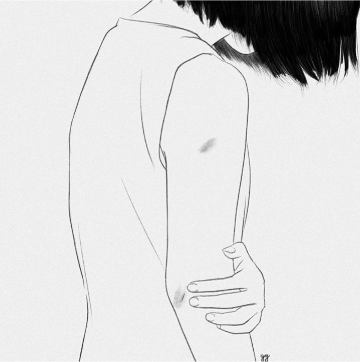Period Pain: My Story
Posted by Catherine Woodlock

For those of you struggling with painful periods or other uncomfortable menstrual symptoms, have you ever imagined the possibility of a smooth and easy menstrual cycle – a regular cycle with no pain, no bloating and no premenstrual symptoms?
One of my mentors used to say:
“A period should be polite, it should come and go with ease and cause no trouble.”
Some of you might find this concept incredulous, and you are not alone.
I remember back when I first transformed into a woman at the age of fourteen. I remember when my first periods were arriving, having to leave work because the cramps were so severe that my face was grey. I was unable to stand upright and I was nauseous.
Thus began many years of missing school and work, waking up in the middle of the night dreaming that a shark was eating my uterus. All of this was accompanied by copious amounts of painkillers.
Throughout my teens, I visited many doctors and gynaecologists who told me that this immense pain was perfectly normal and that birth control was my best option to control the pain. This was difficult for me, especially since I hadn’t even had an ultrasound or any diagnostic testing.
A study from 2012 reports a staggering prevalence of menstrual pain among young women. Dysmenorrhea (painful menstruation) is reported by 84% of women, with 43% reporting that the pain is occurring every period. 55% of women need medication to control the pain, 32% of women experience the inability to function normally, and 25% of women need medication as well as absenteeism from daily activities such as work. (1)
It is no wonder, when faced with numbers such as 1 in 4 requiring both medication and absenteeism due to menstrual pain, that it is considered to be a ‘normal’ condition by our medical community.
Fast forward through many years of awkward and uncomfortable symptoms from the birth control pill, to when I finally discontinued it in my later 20s. The dysmenorrhea came back with a vengeance and continued to disrupt my life.
Again, this was something that I accepted as normal. Throughout all of my years with this traumatizing monthly condition, I never found anything that could alleviate my pain and was conditioned by society to accept this pain as ‘part of being a woman’.
Finally, I had the blessing to begin my studies at a Traditional Chinese Medicine school nestled in the heart of the Kootenays. When we first started our gynaecology class, our instructor told us that a woman’s period should be painless. I literally had to excuse myself from the room because the incredulous laughter that was rolling out of my being was a disturbance to the rest of my classmates. It took me a long time to believe that what has been passed off as ‘normal’ my entire life was unnecessary and indeed even treatable.
The astonishing knowledge that there is a natural and effective treatment option for dysmenorrhea has the potential to improve many women’s lives. Not only does Traditional Chinese Medicine have the potential to reduce the intensity and duration of menstrual cramps, but it also can help to regulate irregular cycles, heavy or scanty menstruation, absence of menstruation and any premenstrual symptoms.
A meta analysis conducted in 2018 included randomized controlled trials comparing acupuncture to no treatment, placebo or medications while measuring menstrual pain intensity and associated symptoms in women with primary dysmenorrhea. This review suggests that acupuncture has beneficial effects for significant improvement of dysmenorrhea and remains efficacious after a short term follow-up (2). Acupuncture and Traditional Chinese Herbal Medicine regulate the hormones, decrease stress, increase blood circulation, regulate the menstrual cycle, reduce pain and regulate inflammation.
During an intake with a practitioner of Traditional Chinese Medicine, many questions will be asked, and every detail of your health will be taken into consideration. An individualized treatment plan will be prescribed for you, usually including an acupuncture and herbal medicine protocol. Other lifestyle advice such as diet, exercise and mindfulness might also be incorporated. Generally speaking, it takes about three months of treatment to affect the cycle of hormones in a lasting way. So while it takes some level of commitment to go through this process, it is well worth the dedication, especially as you watch all of the uncomfortable menstrual issues that you have been told your whole life are normal -resolve.
Do you have menstrual pain? Join us for our Free Community Clinic Day to ‘Stop Period Poverty and Period Pain’. Receive free lifestyle tips on how to prevent dysmenorrhea and a free community acupuncture and massage treatment in exchange for a menstrual product donation for No Woman Without.
Contact us to register. Space is limited!
References:
- Grandi, G., Ferrari, S., Xholli, A., Cannoletta, M., Palma, F., Romani, C., … Cagnacci, A. (2012). Prevalence of menstrual pain in young women: what is dysmenorrhea?. Journal of pain research, 5, 169–174. doi:10.2147/JPR.S30602
- Woo, H. L., Ji, H. R., Pak, Y. K., Lee, H., Heo, S. J., Lee, J. M., & Park, K. S. (2018). The efficacy and safety of acupuncture in women with primary dysmenorrhea: A systematic review and meta-analysis. Medicine, 97(23), e11007. doi:10.1097/MD.0000000000011007
